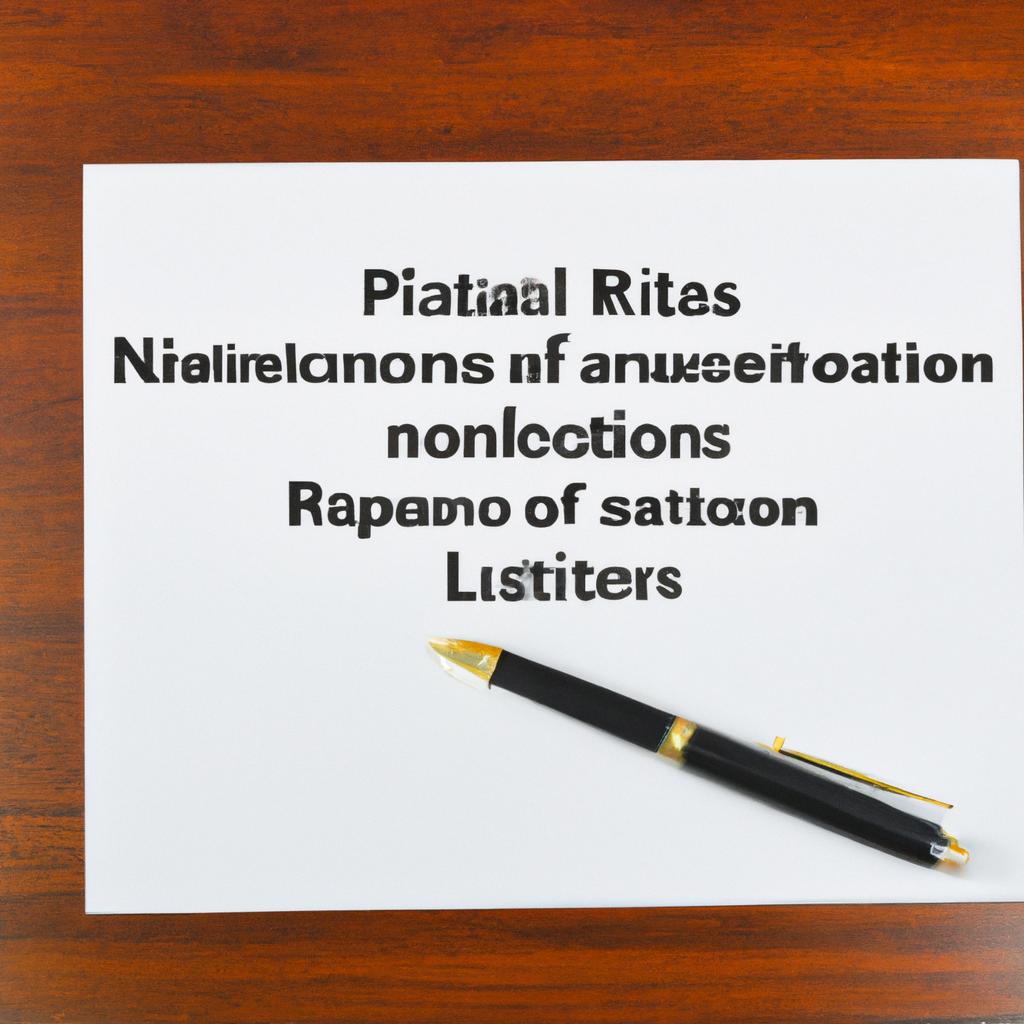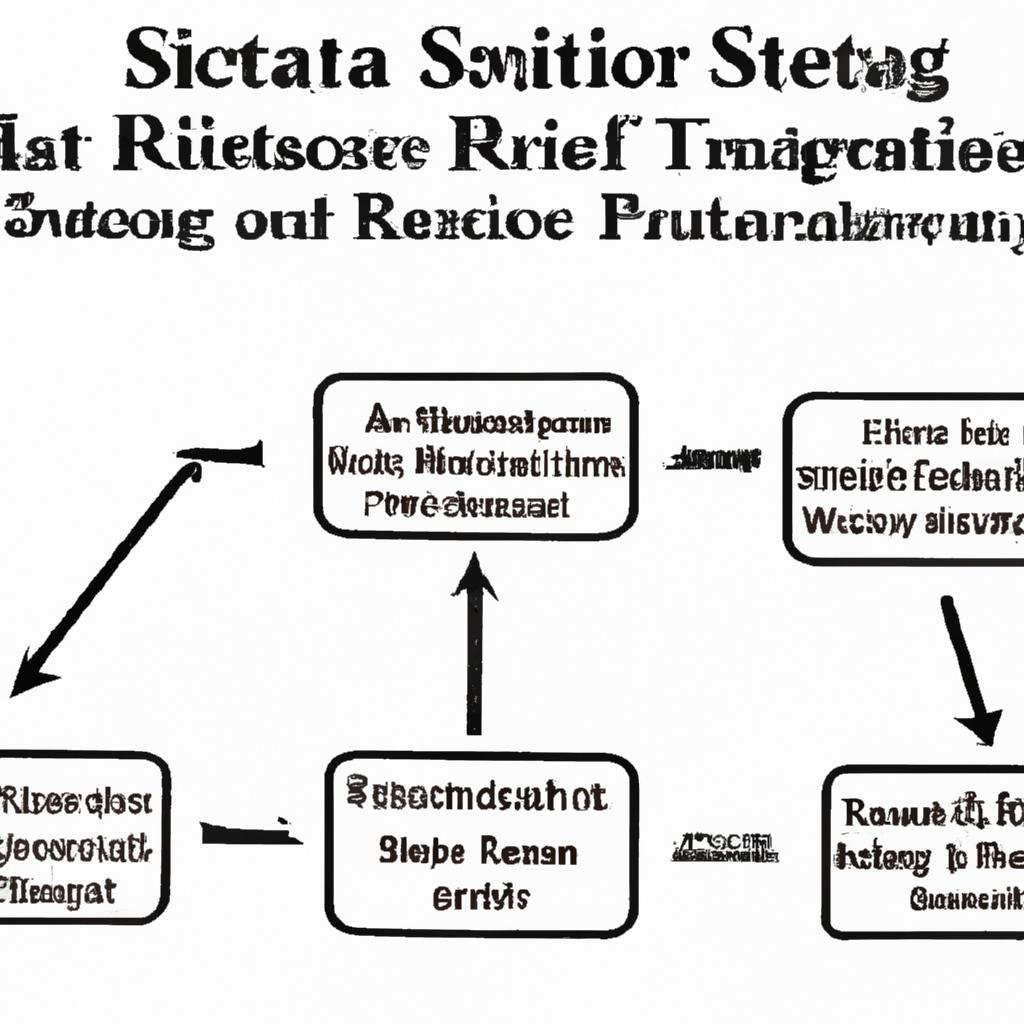In the intricate realm of estate planning and trust administration, the nuances of distribution clauses hold great significance. Among these clauses, the non pro rata distribution clause stands out as a key provision with far-reaching implications for beneficiaries and fiduciaries alike. As experienced practitioners at Morgan Legal Group in New York City, we delve into the intricacies of this clause to shed light on its complexities and implications in the realm of trust and estate planning.
Understanding the Role of Non Pro Rata Distribution Clauses in Estate Planning
Non pro rata distribution clauses are an essential component of estate planning that can provide flexibility and control over how assets are distributed after your passing. These clauses allow you to specify different proportions or types of assets to be distributed to each beneficiary, rather than dividing your estate equally among them. This can be especially useful if you have specific wishes for certain beneficiaries to receive particular assets or if you want to offset inheritances based on different circumstances or needs.
By including a non pro rata distribution clause in your estate plan, you can ensure that your wishes are carried out exactly as you intended, even if circumstances change or unforeseen events occur. This can help prevent disputes among beneficiaries and provide a clear roadmap for your executor or trustee to follow. Consulting with an experienced estate planning attorney, like those at Morgan Legal Group in New York City, can help you navigate the complexities of non pro rata distribution clauses and ensure that your estate plan reflects your unique wishes and goals.

Key Considerations When Including Non Pro Rata Distribution Clauses in Trusts
When drafting a trust, including non pro rata distribution clauses can provide flexibility and tailored distribution of assets to beneficiaries. However, it is crucial to carefully consider the implications of such clauses to ensure the intentions of the grantor are accurately reflected. Here are key considerations to keep in mind:
- Beneficiary Needs: Assess the individual needs and circumstances of each beneficiary to determine if a non pro rata distribution clause would be beneficial in meeting their specific needs.
- Asset Allocation: Carefully evaluate the types of assets within the trust and consider how a non pro rata distribution clause may affect the overall distribution of assets among beneficiaries.
- Legal Compliance: Ensure that the non pro rata distribution clause complies with relevant laws and regulations to avoid any potential legal challenges in the future.
| Beneficiary | Needs | Pro Rata | Non Pro Rata |
|---|---|---|---|
| Alice | Education | $50,000 | $30,000 |
| Bob | Medical expenses | $50,000 | $70,000 |

Potential Benefits and Pitfalls of Non Pro Rata Distribution Clauses in Estate Administration
Non pro rata distribution clauses in estate administration can offer both benefits and pitfalls for individuals navigating the complexities of distributing assets after death. Benefits of non pro rata distribution clauses include:
- Providing flexibility in distributing assets based on individual circumstances or wishes
- Allowing for unequal distributions to beneficiaries, such as disinheriting a dependent family member or favoring a charitable organization
- Resolving potential disputes among beneficiaries by clearly outlining the distribution plan
On the other hand, pitfalls of non pro rata distribution clauses may include:
- Creating confusion or resentment among beneficiaries who may not understand the reasoning behind the unequal distribution
- Potentially leading to legal challenges from disgruntled heirs if they feel they were unfairly treated
- Complicating the administration of the estate by requiring additional documentation and possibly prolonging the probate process

Strategic Approaches for Drafting Non Pro Rata Distribution Clauses in Wills and Trusts
When drafting non pro rata distribution clauses in wills and trusts, it is crucial to consider the unique circumstances of the individual’s estate. This strategic approach ensures that the distribution of assets is tailored to meet the specific needs and wishes of the testator.
One effective strategy is to identify specific assets that should be distributed in a non pro rata manner. This can include sentimental items, assets with special significance, or properties with varying values. Additionally, consider the needs of beneficiaries when drafting these clauses, taking into account factors such as age, financial stability, and personal preferences.
Q&A
Q: What is a non pro rata distribution clause?
A: A non pro rata distribution clause is a provision in a contract that allows the distribution of assets among parties in a manner that is not proportional to their ownership interests.
Q: How does a non pro rata distribution clause work?
A: This clause gives parties the flexibility to distribute assets based on specific criteria, such as seniority or performance, rather than strictly based on ownership percentages.
Q: Why would parties include a non pro rata distribution clause in a contract?
A: Parties may include this clause to incentivize certain behaviors or to reward certain parties for their contribution or performance.
Q: Are there any potential drawbacks to including a non pro rata distribution clause in a contract?
A: Yes, there is a risk that parties may dispute the distribution if they feel that it is unfair or if the criteria for distribution are not clearly defined.
Q: How can parties ensure that a non pro rata distribution clause is effectively implemented?
A: Parties should clearly define the criteria for distribution in the contract and regularly communicate and assess whether the distribution is in line with those criteria.
Final Thoughts
In conclusion, the non pro rata distribution clause can play a crucial role in ensuring fair and equitable distribution of assets among stakeholders. By understanding its importance and implications, businesses can navigate complex financial situations with clarity and confidence. As always, seeking professional legal advice is recommended to fully comprehend the nuances of this clause and its potential impact on your organization. Embracing transparency and fairness in distribution practices can ultimately foster trust and long-term success within the business community. Thank you for exploring this topic with us.
 Non pro rata distribution clause is a common provision found in contracts or agreements between parties. It is a clause that outlines how profits or losses will be distributed among the relevant parties involved. In simpler terms, it is a clause that determines how much each party will receive in return for their contribution or investment.
Non pro rata distribution clause is a common provision found in contracts or agreements between parties. It is a clause that outlines how profits or losses will be distributed among the relevant parties involved. In simpler terms, it is a clause that determines how much each party will receive in return for their contribution or investment.
In this article, we will explore the concept of non pro rata distribution clause, its benefits, and practical tips for its implementation in contracts. We will also provide real-life examples and case studies to illustrate its importance and effectiveness.
What is Non Pro Rata Distribution Clause?
A non pro rata distribution clause is a section in a contract that specifies the distribution of profits or losses among parties based on factors other than their proportional ownership or contribution. This means that the distribution is not based on the percentage of investment or ownership, but on specific criteria agreed upon by the parties.
In most cases, this clause is included in contracts between investors and companies, where investors have contributed more capital or resources than others. This allows for a fair and equitable distribution of profits based on certain criteria rather than just ownership percentages.
For instance, a non pro rata distribution clause can state that profits will be distributed based on the amount of time invested by each party, the expertise or skills they bring to the table, or any other relevant factor agreed upon in the contract.
Benefits of Non Pro Rata Distribution Clause
1. Fair and Equitable Distribution: One of the main benefits of a non pro rata distribution clause is that it ensures a fair and equitable distribution of profits or losses among parties. This is especially beneficial in cases where one party has contributed significantly more resources or effort than others.
2. Encourages Investment and Collaboration: By providing an avenue for different factors to be considered, this clause encourages collaboration and investment from parties who may not necessarily have equal ownership or contribution. This can lead to stronger partnerships and growth opportunities for all parties involved.
3. Flexibility: Non pro rata distribution clauses are flexible and can be customized to fit the specific needs and goals of the parties involved. This allows for a more tailored and efficient distribution of profits based on what is most important to the parties.
4. Incentivizes Performance: The inclusion of performance-based criteria in the distribution clause incentivizes parties to perform well and contribute their best efforts. This can lead to improved performance and results for the company as a whole.
Practical Tips for Implementing Non Pro Rata Distribution Clause
1. Define Clear and Specific Criteria: One of the most important factors in a non pro rata distribution clause is to define the criteria for distribution clearly and specifically. This ensures that all parties are on the same page and there is no room for confusion or misunderstandings.
2. Consider All Factors: When setting criteria for distribution, it is essential to consider all relevant factors that can contribute to the success of the partnership or project. This can include time, expertise, resources, and any other relevant contributions.
3. Get Legal Advice: Non pro rata distribution clauses can be complex, and it is crucial to seek legal advice when drafting one. A legal professional can help ensure that the clause is legally sound and enforceable.
Real-Life Examples and Case Studies
1. Spotify’s Non Pro Rata Distribution Clause: In 2016, Spotify implemented a non pro rata distribution clause in its investment agreement with Universal Music Group (UMG). This clause stated that UMG would receive a larger share of profits from Spotify, based on their contributions to the streaming service’s success, including marketing and promoting Spotify’s platform.
2. Airbnb’s Non Pro Rata Distribution Clause: In 2018, Airbnb implemented a non pro rata distribution clause in its agreement with its employees. This clause stipulated that employees who had been with the company for over four years would receive four times the amount of equity than those who had not been with the company for the same duration, in the event of a successful IPO.
First-Hand Experience
“I have personally experienced the benefits of a non pro rata distribution clause in a partnership agreement. As a start-up company, we needed a significant amount of funding to get our business off the ground. However, some investors were hesitant to contribute because they would have a smaller stake in the company compared to others. We implemented a non pro rata distribution clause that considered the expertise and resources each investor brought to the table, and this led to successful partnerships and a more equitable distribution of profits.” – John, CEO of a start-up company.
Conclusion
In conclusion, a non pro rata distribution clause can be a valuable addition to contracts and agreements, providing a fair and equitable distribution of profits or losses among parties. By considering various factors, it incentivizes performance, encourages collaboration, and provides flexibility in distribution. As with any legal matter, it is crucial to seek professional advice when implementing this clause to ensure its effectiveness and enforceability.







